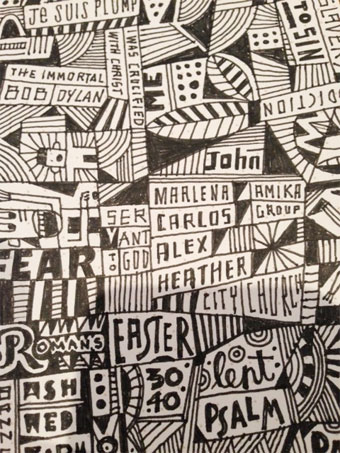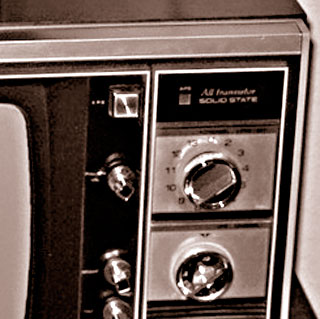This short story is a guest post by my brother Bill, for your holiday reading pleasure. (Thanks Bill!)
It’s a little dark in the context of your optimistic beginning-of-a-new-year moods, but I still think it’s entertaining.
 Once there was a cruel and clever king. He lived in a large castle on a high hilltop, overlooking a beautiful green valley and a lake. In those days, a dragon took up residence in the kingdom. The dragon let it be known that he would destroy all the villages one by one unless he was given a beautiful virgin to eat. When the King heard this, he grew angry and turned red in the face. He bellowed, “We do not negotiate with terrorists!” (The King liked to refer to himself using the royal “We.”) He refused to meet the dragon’s demands.
Once there was a cruel and clever king. He lived in a large castle on a high hilltop, overlooking a beautiful green valley and a lake. In those days, a dragon took up residence in the kingdom. The dragon let it be known that he would destroy all the villages one by one unless he was given a beautiful virgin to eat. When the King heard this, he grew angry and turned red in the face. He bellowed, “We do not negotiate with terrorists!” (The King liked to refer to himself using the royal “We.”) He refused to meet the dragon’s demands.
To show his contempt for the dragon and disdain for the serfs, the King made his courtiers put on a comedic play where a dragon ate a whole village. The role of the dragon was played by the largest and fattest noble. Each time he “ate” a villager, he let out a loud, convincing belch. Sitting next to the King, his only child, the lovely (and virginal) Sesbeth, did not laugh. She was as kind as her father was cruel. Sesbeth loved the people of the kingdom, and they loved her. Despite all of that, her father treasured Sesbeth more than all else in the world. In his cold, cruel heart, he had a soft spot for his daughter.
Not having received his tribute of a lovely virgin, one bright morning the dragon flew over the village of Mossfelk, breathing flames and burning everything to the ground. Upon hearing this, the King stubbornly refused to change his stance. “No negotiating!” he shouted again, although perhaps with a bit less conviction. Over the next few days the dragon destroyed two more villages, Humpert and Rosehearth.
Now the King began to worry. If all his villages were destroyed, where would he get his annual tribute of gold? Who would harvest the food that spread across his dinner table? He summoned his court wizard, the ancient and wise Albrey. The King told Albrey of a plan he had devised and required the mage to fashion a doppelganger for Sesbeth. The faux Sesbeth would be exactly like her in every way except one. She would be ensorcelled with a powerful spell that would instantly destroy her killer.
Albrey immediately set about researching the task, searching through his spellbooks. He also quietly gathered bits and pieces of from the life of Princess Sesbeth, such as one of her neglected childhood dolls, a scarf she no longer wore, and bits of her hair from a used hairbrush. Finally he began creating the doppelganger, working through the night. Just to have a name for his project, he decided to call her Tesh. People in the castle didn’t know what was going on, but they saw mysterious flashes of light and heard rumbling noises, and they wondered.
Finally Albrey was finished. He secretly brought Tesh to the King’s quarters. The King walked slowly around Albrey’s creation, whistling as he admired the result. “She’ll do,” he said. Albrey explained that Tesh could only exist for ten days, at which point she would crumble into nothing. The King called for his Captain of the Guard. He ordered that the most trustworthy and brave guard be brought to him. Moments later, a sturdy guard named Morrt stepped into the King’s chambers. He appeared somewhat nervous but also resolute in his posture as he awaited the King’s orders. The Captain was dismissed, and the King told Morrt what he wanted. Referring to Tesh, he started with “She looks like the Princess, but it’s not her.” Morrt was to take Tesh away under a cloak and hide her in a remote chamber within the castle until she could be taken to the dragon’s den.
Sesbeth awoke the next morning feeling apprehensive. Something was wrong. She couldn’t say what was wrong, but she felt strangely compelled to go to the tallest tower in the castle, and the tower chamber where prisoners were sometimes kept. There, she met Morrt. She urged him to tell her what was going on. At first he resisted, but eventually the Princess’ beauty and gentle nature defeated his fear of the Captain and King, and he told her what he knew.
Not knowing anything about the magical aspects of how Tesh was created or of her hidden nature, Sesbeth was horrified that this lookalike girl would be sacrificed in her place. She quickly decided what she must do.
That afternoon, Morrt rode out. On the horse beside him rode a cloaked figure. The King watched from his window high above the courtyard and gate, finally turning away when they left his view.
Two days passed, including the expected time of the dragon’s next village attack, but no attack came. Indeed, the King’s scouts reported that it appeared the dragon had left the kingdom! Receiving the news, the King rushed through the castle until he found his daughter, eager to celebrate her survival and the success of his scheme.
As he approached Sesbeth, however, he noticed her expression, an odd sort of grim, wide smile. Then she threw her head back and laughed, a loud, guttural cackle. The King immediately knew something was wrong. An instant later, he realized what had happened – the girl who stood before him was not Sesbeth, but rather the wizard’s creation, Tesh. His compassionate daughter must have figured out what was happening and sacrificed herself instead. In his rage and grief, the King drew the jewel encrusted dagger he always wore from the sheath at his belt, and fiercely plunged it deep into Tesh’s chest. Only then did he remember the terrible spell, and his mighty cry was quickly silenced as he and Tesh each disintegrated into twin piles of ashes.








 This is a guest post by my brother, Bill Merrill. Thanks Bill!
This is a guest post by my brother, Bill Merrill. Thanks Bill!
 I was not planning on going to church today. I was instead going to do my taxes. You know, “Give to Caeser…” and all that business, so skipping seemed biblically justified. But I needed to get a DVD from church, so I texted my friend, Arturo, to ask if he could pick it up for me. He texted back, “Sure,” and then proceeded to send me photos “live” from the first service. I thought it was funny that he was not only texting in church, but also taking candid photos.
I was not planning on going to church today. I was instead going to do my taxes. You know, “Give to Caeser…” and all that business, so skipping seemed biblically justified. But I needed to get a DVD from church, so I texted my friend, Arturo, to ask if he could pick it up for me. He texted back, “Sure,” and then proceeded to send me photos “live” from the first service. I thought it was funny that he was not only texting in church, but also taking candid photos. Lately I’ve been thinking about generation gaps. (From this point on, I’ll refer to them as GGs.) I will turn 57 in a few weeks (the new 52). While I don’t have any children, I do have a group of beloved nephews and nieces, ranging from young children to adults. In my volunteer job, I also work with a bunch of twenty-somethings. I’ve sometimes been reflecting on our differences, and also trying to remember how I viewed the GG when I was on the younger side of it.
Lately I’ve been thinking about generation gaps. (From this point on, I’ll refer to them as GGs.) I will turn 57 in a few weeks (the new 52). While I don’t have any children, I do have a group of beloved nephews and nieces, ranging from young children to adults. In my volunteer job, I also work with a bunch of twenty-somethings. I’ve sometimes been reflecting on our differences, and also trying to remember how I viewed the GG when I was on the younger side of it.









 Growing up in the late ’60s and early ’70s, we kids knew there was a condition in our home for watching TV. Our dad had a firm rule that the commercials had to be turned down! As this was before the invention of remote control devices and “Mute” buttons, it involved jumping up from your seat as soon as a commercial break started, running to the TV set and turning the volume knob counterclockwise all the way. Then the whole process would be repeated in reverse once the show was back on. He did this because he wanted to spare us (and the adults) from the experience of having commercial jingles running in our heads (or humming them around the house). In those days, most commercials contained a jingle (song) written specifically for the product, and they were indeed quite catchy. A few must have snuck through from those infrequent times when commercials weren’t turned down – to this day, I can sing you the opening bars of “Wouldn’t you really rather have a Buick?” or “Winston tastes good, like a cigarette should.” (Yes, cigarette commercials were allowed on TV for part of that time.)
Growing up in the late ’60s and early ’70s, we kids knew there was a condition in our home for watching TV. Our dad had a firm rule that the commercials had to be turned down! As this was before the invention of remote control devices and “Mute” buttons, it involved jumping up from your seat as soon as a commercial break started, running to the TV set and turning the volume knob counterclockwise all the way. Then the whole process would be repeated in reverse once the show was back on. He did this because he wanted to spare us (and the adults) from the experience of having commercial jingles running in our heads (or humming them around the house). In those days, most commercials contained a jingle (song) written specifically for the product, and they were indeed quite catchy. A few must have snuck through from those infrequent times when commercials weren’t turned down – to this day, I can sing you the opening bars of “Wouldn’t you really rather have a Buick?” or “Winston tastes good, like a cigarette should.” (Yes, cigarette commercials were allowed on TV for part of that time.) Once there was a cruel and clever king. He lived in a large castle on a high hilltop, overlooking a beautiful green valley and a lake. In those days, a dragon took up residence in the kingdom. The dragon let it be known that he would destroy all the villages one by one unless he was given a beautiful virgin to eat. When the King heard this, he grew angry and turned red in the face. He bellowed, “We do not negotiate with terrorists!” (The King liked to refer to himself using the royal “We.”) He refused to meet the dragon’s demands.
Once there was a cruel and clever king. He lived in a large castle on a high hilltop, overlooking a beautiful green valley and a lake. In those days, a dragon took up residence in the kingdom. The dragon let it be known that he would destroy all the villages one by one unless he was given a beautiful virgin to eat. When the King heard this, he grew angry and turned red in the face. He bellowed, “We do not negotiate with terrorists!” (The King liked to refer to himself using the royal “We.”) He refused to meet the dragon’s demands. This is the very first guest post by Heather, my wife. Yay! (She wrote it back in August.)
This is the very first guest post by Heather, my wife. Yay! (She wrote it back in August.) Remember that book –
Remember that book –  The learning curve for the Moody’s has been a vertical line since moving to Fairbanks, AK last October. Change is too small of a word to describe what we’ve seen, learned, tasted, felt, smelled, and embraced. Here are a few of the new things in our lives:
The learning curve for the Moody’s has been a vertical line since moving to Fairbanks, AK last October. Change is too small of a word to describe what we’ve seen, learned, tasted, felt, smelled, and embraced. Here are a few of the new things in our lives: